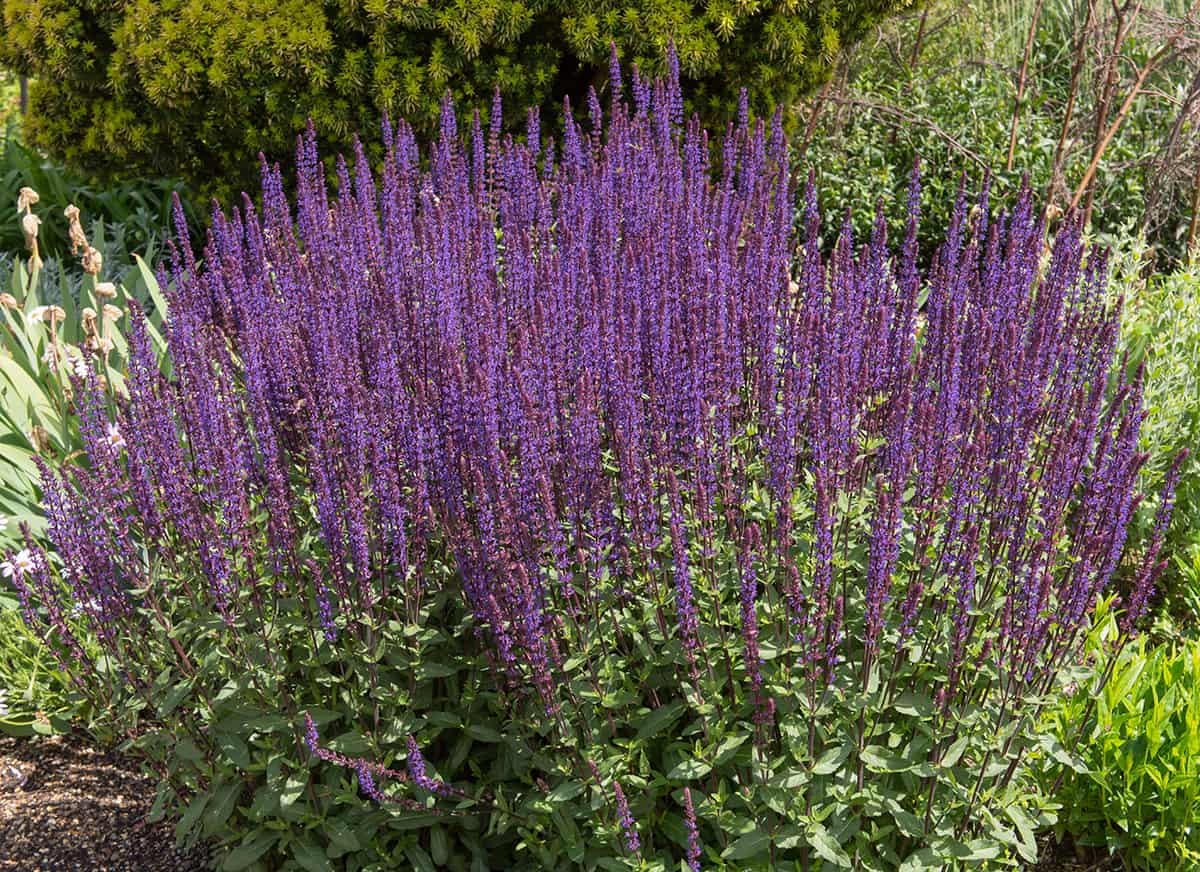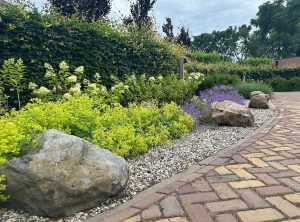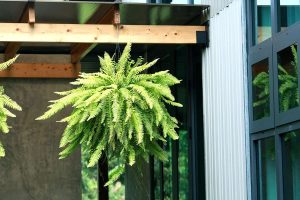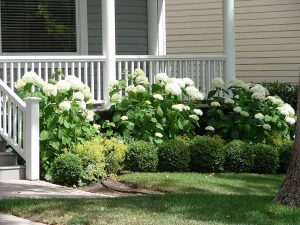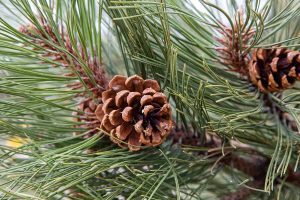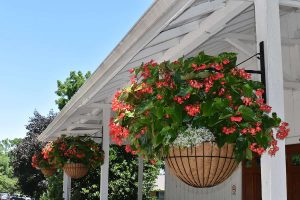If you have sandy soil in your garden then this can present a challenge for many types of plants. Sand has larger particles compared with loamy or clay soils, which means it drains much more quickly.
Though many plants enjoy well-draining soil, often sandy soil is too well-draining, which means the moisture is carried away from the roots of the plants before they have had the opportunity to absorb enough of it.
Fortunately, there are many plants that thrive in sandy soils, so a sandy garden can still be lush and productive, you just need to choose your plants carefully to ensure their requirements align with your soil type.
Here we explore perennial plants that will grow well in sandy soil types.
Table of Contents
Is Sandy Soil Good for Plants?
Sandy soil is not usually thought of as the ideal growing medium for garden plants, so if you have sandy soil in your local environment you may be wondering whether your plants will be able to survive. Interestingly, though sandy soil would not be the first choice of soil for the vast majority of plants, it is actually perfect for plants that thrive in dry climates or those which cannot endure soggy or waterlogged conditions.
In fact, if you are planting succulents or cacti, for example, then sandy soil will be the best type of growing medium for these plants. This is because these types of plants have low water needs, and their roots should not be constantly surrounded by moisture. In order for plants with low water needs to thrive, their growing medium needs to be very well draining.
Sandy soil offers just that since the larger particles of sand encourage the water to drain through quickly, meaning that the roots of the plants can get the moisture they need without becoming too wet. A fast draining soil such as sandy soil will prevent root rot, especially in the event of heavy rain. The rainwater will drain away from the roots of the plant so that they aren’t negatively affected by excess rain.
Sandy soil can be a good choice for many plants, however, it isn’t right for some. Plants which thrive in consistently moist conditions are not a good match for sandy soils, since it won’t retain water as well as soils with smaller particles.
Moisture-loving plants are better suited to soil textures that have better water retention qualities, such as loamy soils, clay soils, or soils high in organic content. These types of soils won’t drain as quickly as sandy soils, therefore providing the roots of the plants with more consistent moisture.
Perennials for Sandy Soil
Perennials that grow well in sandy soil can provide color and interest to the garden year after year. The best plants for these conditions include:
Phlox

- Botanical name: Phlox sp.
- Common names: Creeping Phlox, Garden Phlox, Sand Phlox
- Plant family: Polemoniaceae
- USDA hardiness zone: 4 – 8
- Mature height: Up to 4 feet
- Mature spread: Up to 3 feet
Phlox is a genus of predominantly low-growing plants, encompassing 67 different species. Of these, all but one are native to North America. The most common species you can expect to find growing in home gardens are Creeping Phlox (Phlox stolonifera), Garden Phlox (Phlox paniculata), Spreading Phlox (Phlox diffusa), Carolina Phlox (Phlox carolina), and Woodland Phlox (Phlox divaricata).
These plants produce dense clusters of brightly colored flowers, resulting in the look of a floral mat across the ground. Many types of Phlox are ideal for attractive ground cover, as well as adding color to the garden.
Phlox has very low moisture needs, which makes it the perfect plant for growing in sandy soils. Once well established, Phlox is drought tolerant, so it is well suited to growing in soils which are not able to retain moisture. Most types of Phlox thrive in full sun or partial shade, and they are notoriously easy to take care of.
Salvia
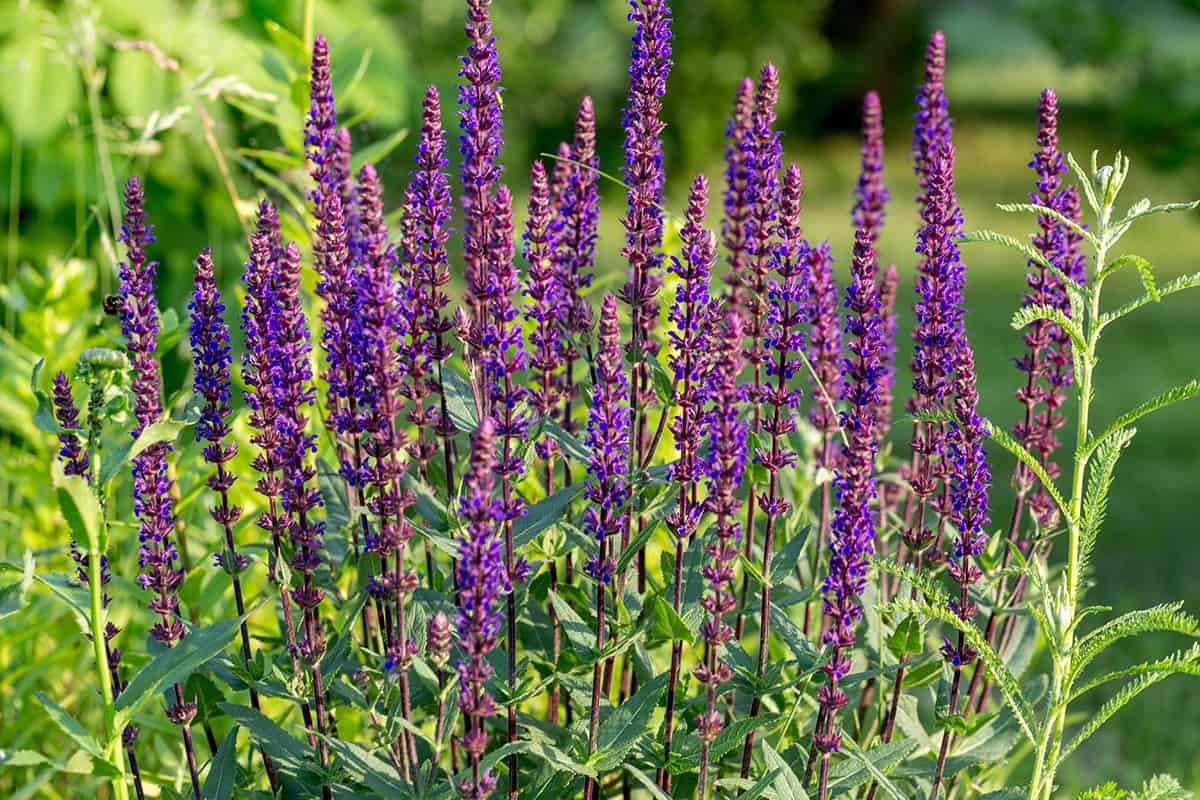
- Botanical name: Salvia sp.
- Common names: Sage, Salvia
- Plant family: Lamiaceae
- USDA hardiness zone: 3 – 11
- Mature height: Up to 5 feet
- Mature spread: Up to 5 feet
Salvia is a huge genus of plants that comprises almost 1000 different species. Within this are perennials as well as annuals. The most widely known type of Salvia is probably the Common Sage plant (Salvia officinalis), which is grown for its use in culinary dishes as an edible herb.
Other types of Salvia include Scarlet Sage (Salvia coccinea), Desert Sage (Salvia dorrii), and Mexican Bush Sage (Salvia leucantha). Salvia plants are native to various regions around the world, including Asia, Central and South America, and the Mediterranean. There are many types of Salvia which are herbs, and these are commonly grown in edible gardens.
Common Sage has gray-green foliage that is heavily aromatic, with a soft texture. Rosemary is also an aromatic edible herb in the Salvia genus, having been categorized as Salvia rosmarinus since 2017. What most types of Salvia have in common is their love of sun, and a need for well-draining soil.
Since sage plants typically fare best in dry to medium soils, sandy soils are ideal because they carry moisture away from the roots of the plants to avoid wet root systems. These plants do not cope well in wet soils, so if your soil does not drain quickly, work some more sand into it.
Black-Eyed Susan
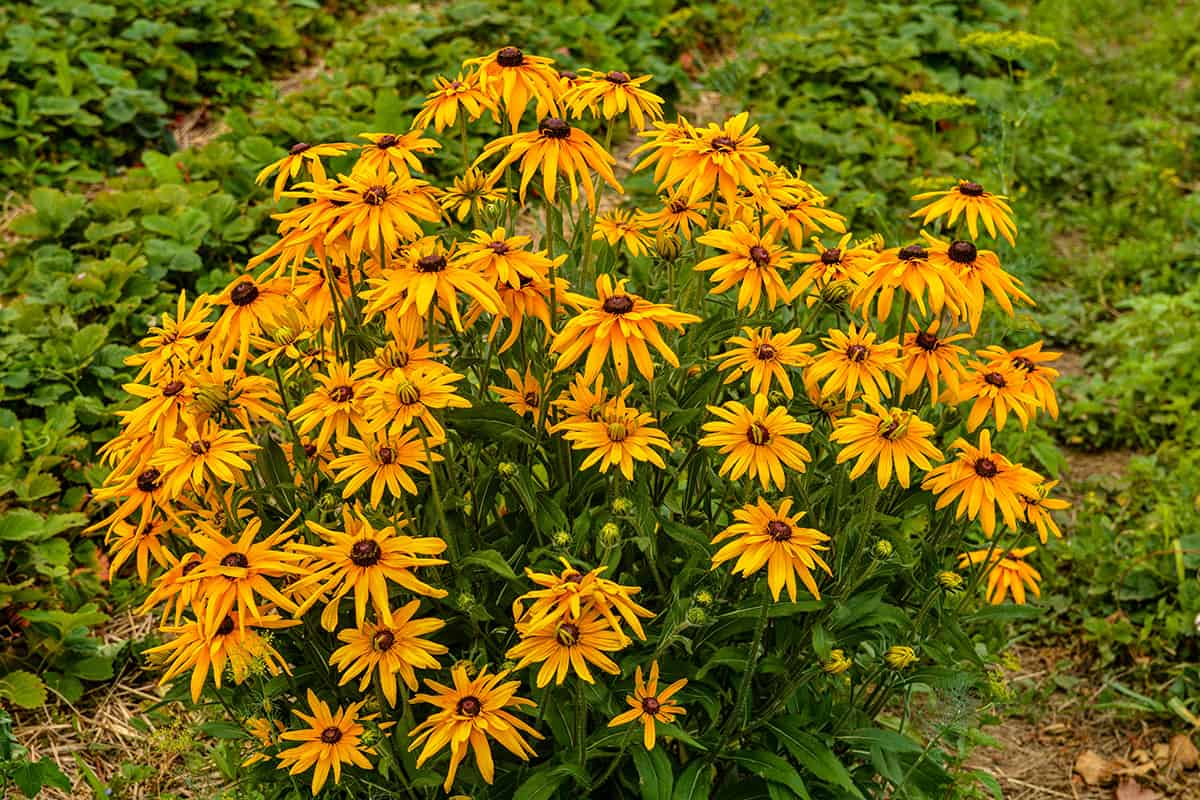
- Botanical name: Rudbeckia hirta
- Common names: Black-Eyed Susan, Yellow Daisy, Gloriosa Daisy
- Plant family: Asteraceae
- USDA hardiness zone: 4 – 9
- Mature height: Up to 3 feet
- Mature spread: 1 to 2 feet
Black-Eyed Susan is a type of perennial wildflower native to North America. It produces vivid yellow daisy flowers from late spring and throughout summer, adding a dense carpet of color to the landscape. These are easy-care plants, like most wildflowers, which will thrive on neglect.
They should be planted in a position of full sun in well-draining soil, and for the most part, can be left alone throughout the season. Black-Eyed Susans can be grown in full sun through to partial shade, and they enjoy dry to moderately moist soils. Once established, these plants are drought tolerant and will struggle in wet soils, so sandy soils work well because they will ensure that moisture is not held against the roots of the plant.
Sedum
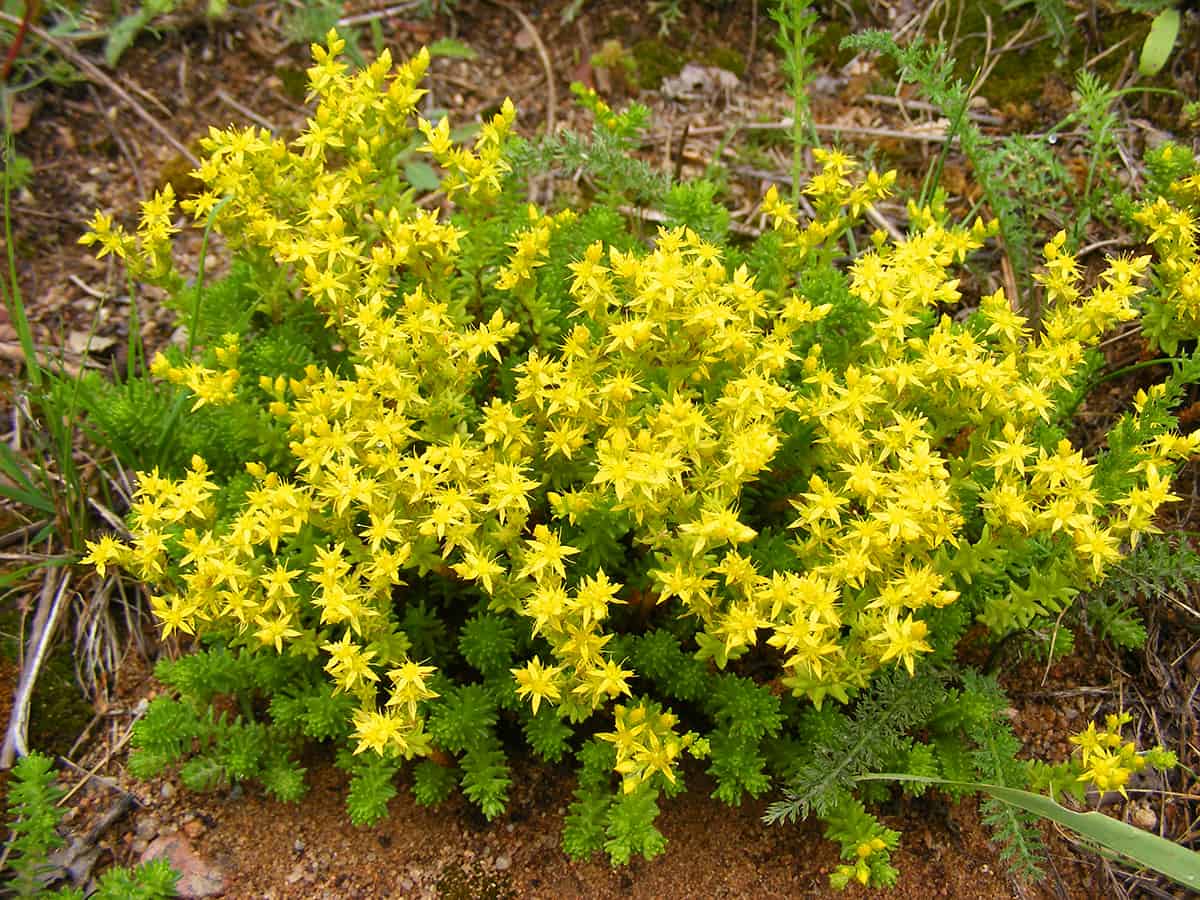
- Botanical name: Sedum sp.
- Common names: Sedum, Stonecrop
- Plant family: Crassulaceae
- USDA hardiness zone: 4 – 9
- Mature height: 3 inches to 2 feet
- Mature spread: 1 to 2 feet
Sedums are a type of plant commonly referred to as Stonecrop. There are almost 500 different species belonging to the Sedum genus, and many of these are succulents or alpines, with fleshy leaves and shallow roots. Though some types of sedums are regarded as weeds, many make for a beautiful addition to the home garden. As very drought tolerant plants, these are ideal for growing in rock gardens, along gravel pathways, and in the sand.
Sedums are low-growing plants that can spread quickly when grown in the right conditions, and due to this, they work well as attractive ground cover. Many types of Sedums are favored for their unusual foliage, however they can also produce interesting flowers, for example the Cliff Stonecrop (Sedum cauticola) which sends out masses of hot pink star-shaped blooms in early fall.
In order for Sedums to thrive, they need to be grown in free-draining soil. Sandy soil is ideal for this because it can drain very quickly. Sedums will not tolerate having their roots exposed to consistent moisture, so you can also add gravel to your sandy soil to help it drain even faster.
Geranium
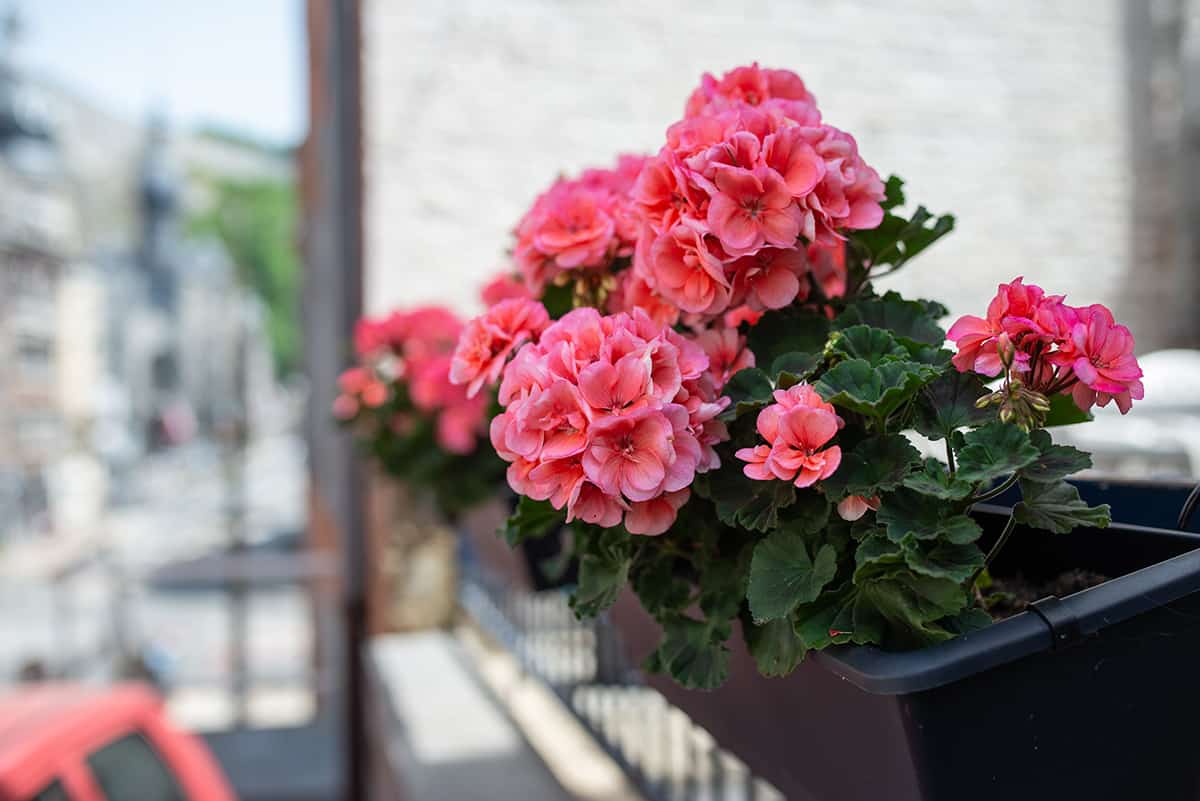
- Botanical name: Geranium sp.
- Common names: Geraniums, Cranesbills
- Plant family: Geraniaceae
- USDA hardiness zone: 5 – 9
- Mature height: Up to 4 feet
- Mature spread: 1 to 3 feet
There are 422 species of Geranium, some of which are perennials, while others are annuals and biennials. These plants are colloquially known as simply Geraniums or Cranesbills.
They are renowned for their flowers which are typically pink, purple, blue, or white, though some types of Geranium are favored for their foliage, such as the Giant Herb Robert Geranium (Geranium maderense), which produces large lacy leaves spanning around 8 inches in length.
Geraniums are perfect for growing in warm, dry climates, since they are tolerant of drought, and thrive on neglect. These low-maintenance plants can be grown in sandy soils, as well as chalk, clay, and loamy soils providing they have good drainage. Geraniums cannot be grown in wet or waterlogged soils.
Bearded Iris
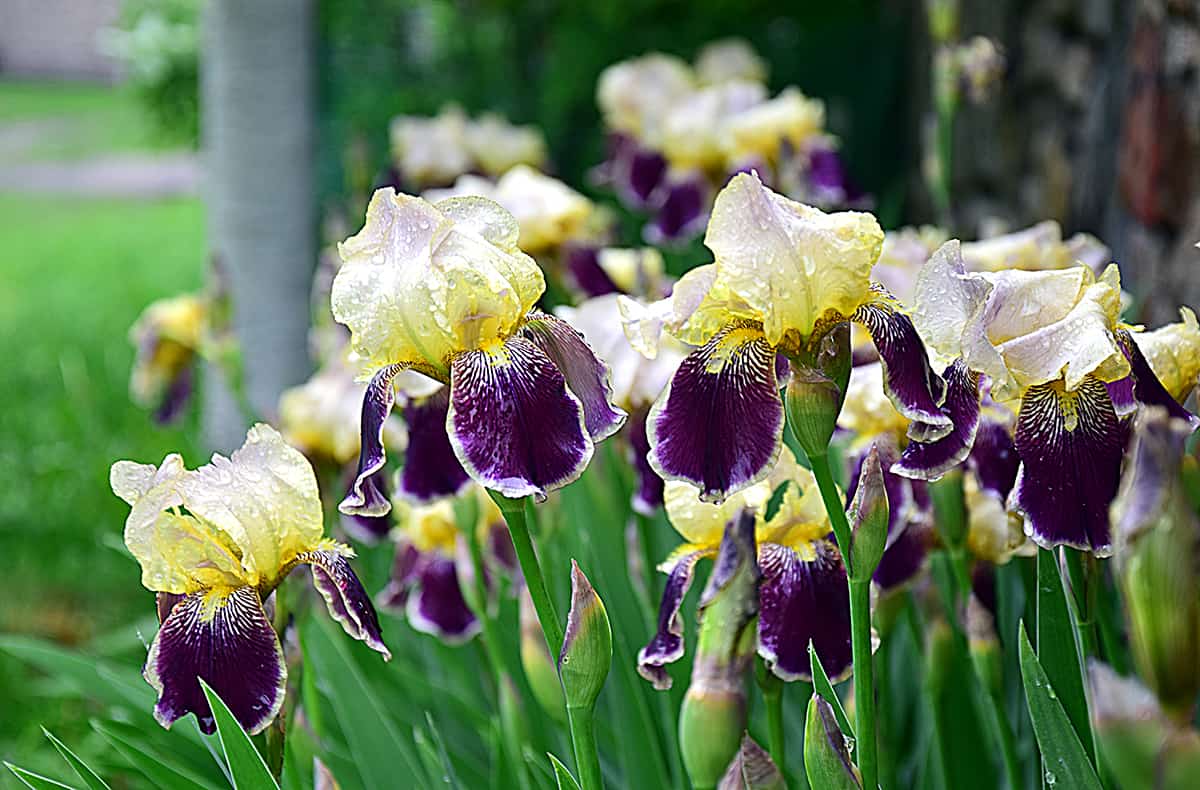
- Botanical name: Iris germanica
- Common names: Bearded Iris
- Plant family: Iridaceae
- USDA hardiness zone: 3 – 9
- Mature height: Up to 3 feet
- Mature spread: Up to 2 feet
The Bearded Iris is native to the Mediterranean region and southern Europe. It is a perennial plant that is among the most popular of all types of Iris, thanks to the ease with which it grows, and its stunningly unusual flowers. There are a huge variety of Bearded Irises available, with some blooming early in spring and into early summer, while others bloom later in spring and continue flowering into the fall.
These plants also come in an extensive array of flower colors, including purple, pink, white, red, orange, blue, and yellow. They produce sword-like foliage which adds an extra dimension to the visual effect of the plant. Bearded Iris plants perform best in full sun. Though they can survive in shade, their flowering capacity will be greatly reduced.
Sandy soil is best for these plants because they rely on good drainage to protect their roots from rotting. Avoid heavy or dense soils which do not drain well, or add sand to compacted soils to encourage better drainage. Bearded Irises are drought tolerant once established, and fare best in dry to moderately moist soils.
Lupins
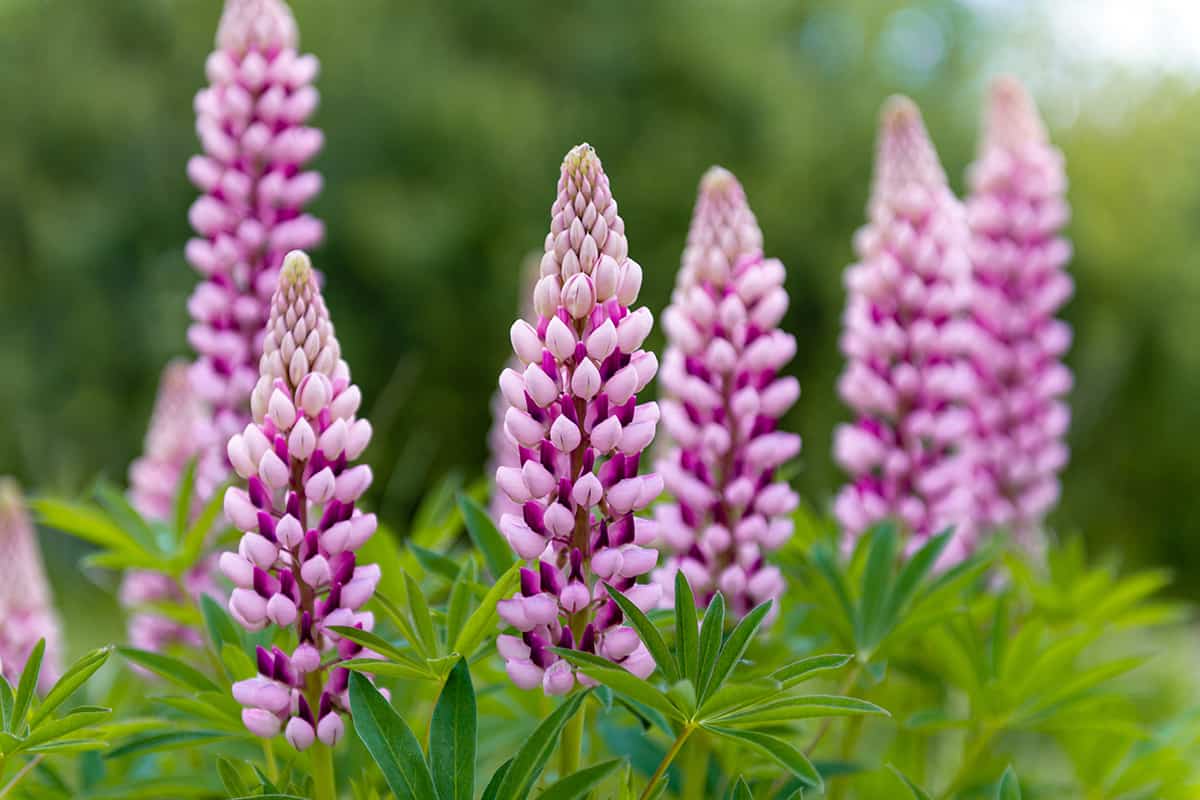
- Botanical name: Lupinus × hybrida
- Common names: Lupin, Lupine, Bluebonnet
- Plant family: Fabaceae
- USDA hardiness zone: 4 – 8
- Mature height: 3 to 4 feet
- Mature spread: 1 to 1.5 feet
Lupins are a genus of plants which encompass around 200 different species. Most of these are native to North and South America, though there are also some which are native to Europe. While there are a large variety of different Lupin plants in existence, the types of Lupin you will typically see grown in a home garden, or for sale in a plant nursery, are hybrid Lupins.
These plants most commonly have Lupinus polyphyllus as one of their parents, which has been crossed with another type of Lupin, Hybrid Lupins are known for their vibrantly colored flowers which surround a central erect spike on the plant through the summer. Lupins enjoy full sun and moist soil, though they don’t like to be grown in soggy conditions.
Sandy soil works well for these plants, however, you need to remember to water the soil frequently because Lupins are not drought-tolerant.
False Sunflower
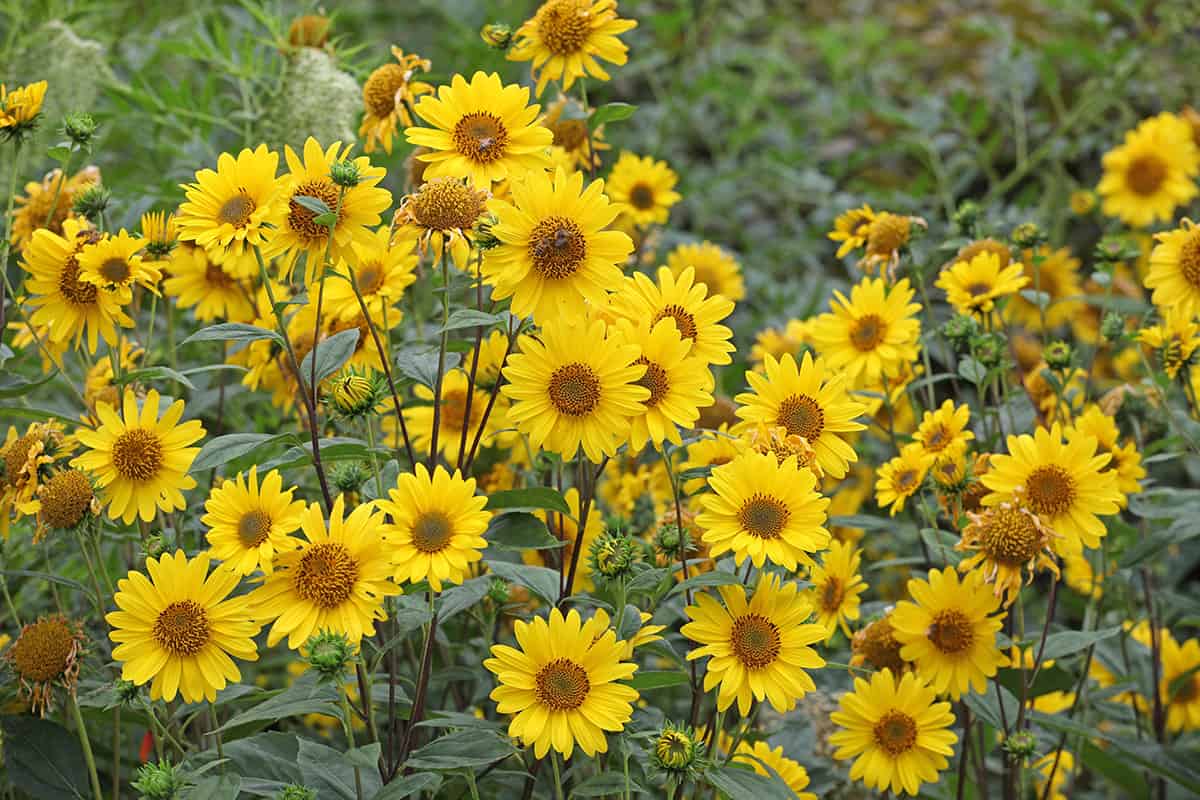
- Botanical name: Heliopsis helianthoides
- Common names: Heliopsis, False Sunflower, Oxeye Sunflower, Rough Oxeye, Smooth Oxeye
- Plant family: Asteraceae
- USDA hardiness zone: 3 – 9
- Mature height: 3 to 6 feet
- Mature spread: 2 to 3 feet
The False Sunflower is native to North America, from Newfoundland in Canada down to New Mexico in the United States. These brightly colored plants produce flowers that look like miniature sunflowers, measuring around 3 inches across.
They have an extended blooming period, arriving in spring and remaining in flower right through to fall. As well as producing pretty flowers, the False Sunflower also has attractive foliage. The medium sized green leaves have serrated edges which add further interest to the plant.
Just like sunflowers, the False Sunflower plant thrives in full sun. It is not fussy about the type of soil it is grown in, however it performs best in dry soils with excellent drainage. Because of this, sandy soils are a great choice for the False Sunflower, because they won’t hold moisture close to the roots of the plant for long.
